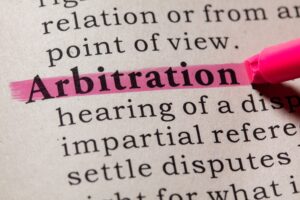
Arbitration as an Alternative in Family Law
Recently, we have had a number of cases where parties have good prospects to appeal, but a decision has been
Call us on
Step one in any family law property settlement is to identify and value the current assets and liabilities for each party, including any superannuation interests.
The second step is to identify and assess various types of contributions made by each party from the commencement of cohabitation up to and including the current date.

There is a common misconception amongst the general public, and even amongst some lawyers, that a contribution must be linked to an actual existing piece of property. There is no such requirement.
Whilst, one has to identify contributions to the acquisition, conservation and improvement of property, there are also other types of contributions, including contributions to the welfare of the family that must be considered. There are many types of contributions that by definition, simply cannot relate to specific pieces of property and nor are they capable of any mathematical certainty and calculation.
If for example, a couple are married for twenty years and build up an asset pool of say $1M, but lose all of that prior to separation. After separation and before any property settlement is finalised, one of the parties wins $1M in Lotto. Post-separation, that party who won the Lotto may argue that the other party has made no contribution to the post-separation Lotto winning. However, the Law will look at the contributions by the other party throughout the entirety of the relationship – those contributions relate to other pieces of property (even though they do not exist now, and include direct and indirect contributions to those previously owned properties). More importantly, if there are children of the relationship, the other party can point to contributions to the welfare of the family throughout the relationship and even post-separation that requires the Law to properly weigh and assess.
Often, we hear clients become upset and make statements such as “why should my wife get part of our family business, she has never done anything in the business?” The fact is one does not have to do anything directly in a financial sense to any piece of property to have a possible claim.
The contributions that must be looked at include contributions to the family, children and domestic contributions and also include indirect contributions and non-financial contributions to property. Most importantly, those contributions do not have to be tied to any particular piece of current existing property to be able to show a claim.
Each particular financial settlement for separating couples is different and the Law relating to contributions and how that is assessed against existing property is not straightforward. One should always seek expert advice from an accredited family law specialist as to their rights and entitlements.
There is a common misconception amongst the general public, and even amongst some lawyers, that a contribution must be linked to an actual existing piece of property. There is no such requirement.
Whilst, one has to identify contributions to the acquisition, conservation and improvement of property, there are also other types of contributions, including contributions to the welfare of the family that must be considered. There are many types of contributions that by definition, simply cannot relate to specific pieces of property and nor are they capable of any mathematical certainty and calculation.

Recently, we have had a number of cases where parties have good prospects to appeal, but a decision has been

Recently, we have had a number of cases where parties have good prospects to appeal, but a decision has been

Recently, we have had a number of cases where parties have good prospects to appeal, but a decision has been

© 2024 Hartley Family Law – All Rights Reserved | Privacy | Terms & Conditions

The Privacy Statement of the Company is incorporated into these Terms and Conditions. The Company respects the privacy of all its customers and business contacts. The Company is subject to the requirements of the National Privacy Principles which are contained in the Privacy Act.
1. How is personal information collected?
Your name, email address and phone number are collected on the contact form to allow the Company to contact you.
If you email or phone the Company directly, then the Company may record your personal details.
Your personal information may be used to:
a) Improve service to you, the customer
b) The Company may use personal information about you for marketing and research purposes. If you do not wish this to occur, please contact us and we will ensure this does not occur
c) Your personal information is not disclosed to any organisation outside of the Company.
2. Will personal information be given to anyone else?
The Company does not sell or provide your personal information to any other company.
3. Security of personal information
The Company employees are required, as a condition of their employment, to treat personal information held by the Company as confidential, and to maintain the confidentiality of that personal information.
The Company protects the personal information it collects in a secure database.
4. Access and correction
You can access your data at any time by contacting the Company directly.
You also have the right to ask us to correct information about you which is inaccurate, incomplete or out of date.
We ask you to contact the Company by email or phone using the Company contact details if you wish to access or correct any of your personal details.
5. Online privacy issues
To the extent that this Privacy Policy applies to online privacy issues, it is to be read as forming part of the terms of use for our website. When you deal with the Company whether online or otherwise, the Company takes its privacy obligations seriously.
6. Additional privacy information and how to contact the Company
The Company may change its Privacy Policy at any time.
For further information about privacy issues and the protection of privacy visit the Australian Federal Privacy Commissioner’s website at www.privacy.gov.au. If you feel that The Company is not complying with this Privacy Policy, or if you have other privacy concerns, please contact the company.